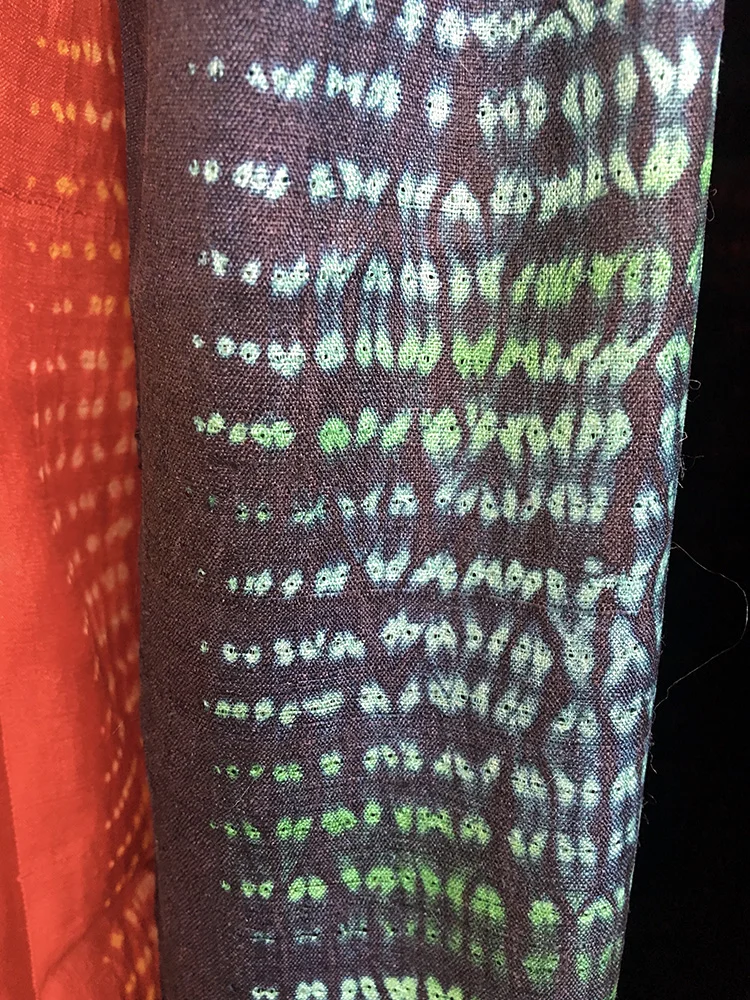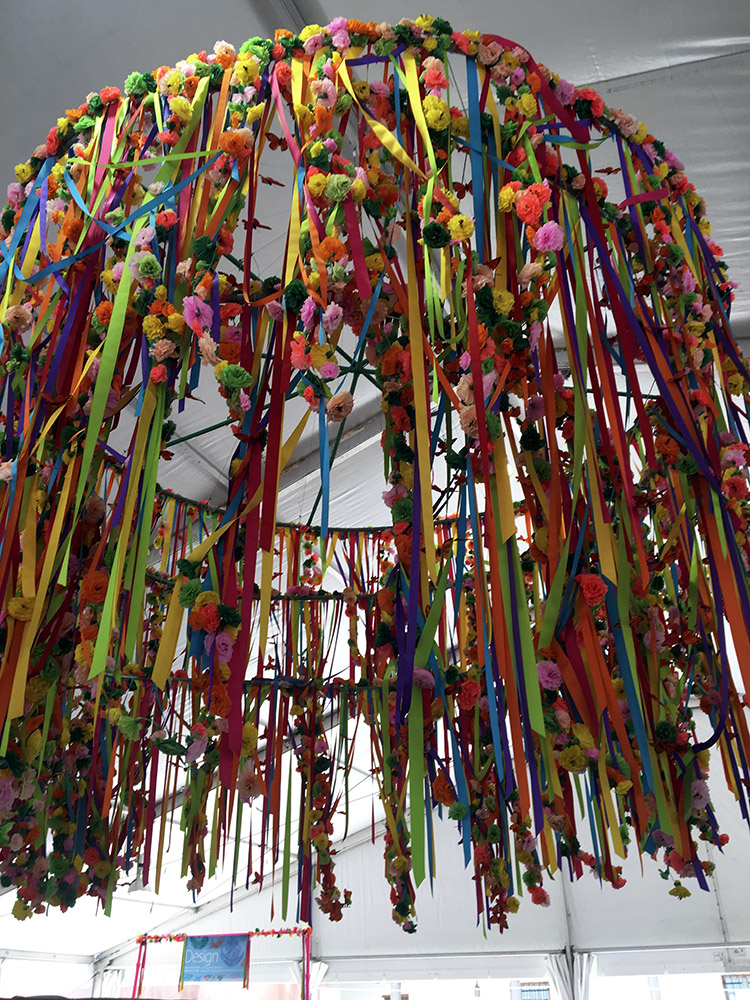I went to the Santa Fe International Folk Art Market this past weekend. I'd never been* and so this was the year. I had seen the film, Silkies of Madagascar, at the Clothroads film festival and then read the Thrums book, Silk Weavers of Hill Tribe Laos. Both things made me want to see the market where so many artists gather to show their art.
Santa Fe International Folk Art Market, 2018. photo: Emily Haire
Of course there are people. Lots and lots and lots of people. You have to ride a shuttle bus to get there which is fortunate and turned out to be simple. Once there, there are lots of helpers and things are very organized. But there are still a lot of people. Introverts struggle with this.
The first thing on my list was to visit this booth.
Joshua Hirschstein and Maren Beck wrote a wonderful book, Silk Weavers of Hill Tribe Laos which tells the story of their family visiting the village of Xam Tai over more than a decade, the stories of the people there, and the most marvelously, the details of how these textiles are made. They were at the market representing the women of the village who could not attend this year.
Detail of silk weaving from Laos
I was fortunate to be able to monopolize Maren Beck's attention for quite awhile. In the image below she is showing me a textile that uses both tapestry technique and the traditional weaving technique of the Laos weavers. If you'd like to know more about these amazing people and their textiles, I reviewed the book in THIS blog post.
More shoulder cloths from the silk weavers of Laos.
This was amazing: to hold this hand-reeled silk which was so soft and then to look at the textiles and remember the photos from the book of the silk reeling and dyeing and then the weaving. The process is complicated and lengthy... and perhaps not so different from a tapestry weaver who raises her own sheep, shears, spins, dyes, and weaves her own artwork. Except the silk weavers not only have to grow the food for the silkworms (instead of sheep) but they also have to grow or gather the dyestuff for their colors.
And it is probably lucky for me they didn't have any of this for sale. It was so beautiful.
After spending most of my time at the market bothering Maren with questions and keeping her from other customers, I couldn't walk away without purchasing one of these textiles. I almost ordered one online from Maren and Josh's business, Above the Fray, after reading the book, but I wanted to feel the textiles before doing so. This shoulder cloth woven by Phout stood out to me and I just might have come home with it.** I loved that she is a main character in the story of her village and the weaving done there.
Phout is an entrepreneur, only a couple years older than I am, and a master dyer and weaver. From Silk Weavers of Hill Tribe Laos:
In 2003, Phout, following the lead of her colleagues Souksakone and Lun, stepped into the business world and bregan dyeing silk and designing traditional textiles for the broader marketplace. On a shoestring budget and completely self-supporting, and with the inspiration of her spirited aunt Sukkhavit, Phout invested in local silk- and dye- work, committed to several of her template designs, and coordinated with several of the best local weavers to produce silks that she believed would be attractive in the developing tourist and international marketplace.
She works hard, knows her stuff, and continues to grow her business. No wonder I like her. She currently coordinates the work of fifty weavers in Laos. As Joshua says in the book, "she has been central to our welcome in Xam Tai, and has been a vessel of information and detail about dyeing, template-making, weaving, and the marketplace. She is, simply, one of the most engaging and nourishing people we have ever met, and one can't help but be present in her presence."
I am honored to own one of her weavings.
Shoulder cloth by Phout, silk weaver from Xam Tai, Laos
This might have been the most interesting thing to me about the market. The art was wonderful, but there was too much of it to really take in amongst the press of so many people. What I appreciated most was hearing a few stories from and about the artisans and learning more about how they make these beautiful things. I wished I could have had an evening to sit down with any one of them and hear their experiences. And maybe one day I can make that happen. Laos anyone?
I did see a bit of the rest of the market.
Peru. Nilda's booth!
What a marvelous display of things made by humans all over this planet. It is a place that, if you take time to see what is around you, gives you hope for the future of the planet. Maybe we can come together around our shared creativity if nothing else.
In the gallery below, click on the images for a larger image.
Have you been to the Santa Fe International Folk Art Market? What was your experience? Tell us in the comments!
* I know, I know. I used to LIVE in Santa Fe. I grew up in Gallup. I lived in Northern New Mexico for a large portion of my life. But I'd never been to this market. I've rectified that now.
** A big thanks to my Mom who made this a wonderful birthday present.






